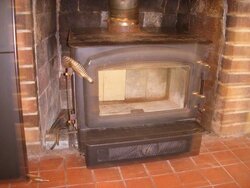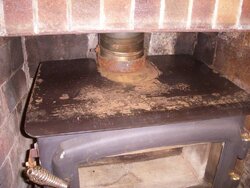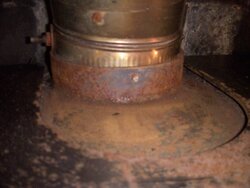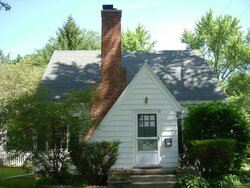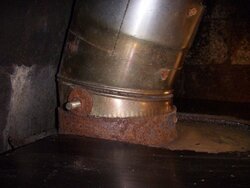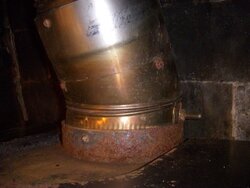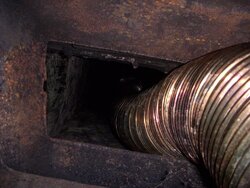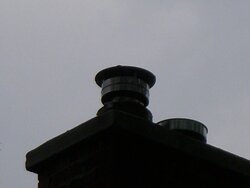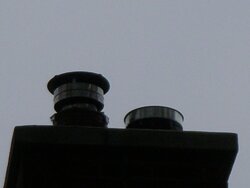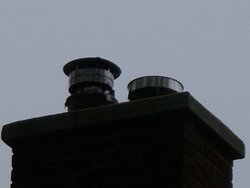In August of 2009, I had a local company install a Regency I1200 insert and a flex liner. In the spring of 2010, I noticed that water was getting onto the top of the insert and that it was starting to rust up a little. When I later hired a chimney sweep to clean the liner (different company), I mentioned this. The sweep told me that he thought the chimney cap just needed some silicon caulk and did this for me. Assuming the problem was taken care of, I scoured and repainted the top of the insert, and didn't think anything more about it. I should have been more careful as this spring, I noticed again that water was leaking onto the insert and that the top was rusting up again. This time, I called the original company that did the installation. They charged me $133 to come look at the problem (the installation was "out of warranty") and initially told me, like the sweep, that it was a problem with caulking around the chimney cap.
I've been keeping a very close eye on this now and noticed water leaking on the insert after every hard rain. I've subsequently had this same company out three more times to try and figure this out. After several different theories and failed attempts, the technician got a hose out and seemed reasonably confident that the liner was leaking as the chimney cap "wasn't seated right on the liner". Interestingly, this same technician has written a separate work order every time he's come out, but told me that he "wasn't going to bother with it this time". This perked up my BS detector, and I made him write one up anyway.
Attached are pictures of the water damage. Assuming the problem is fixed, how does everyone think I should proceed from here? Specifically I wonder:
1) Will this rust affect the integrity of the insert or is it purely cosmetic?
2) Is there anything after the installation that would cause the liner to "unseat" from the cap? Specifically, could this have been caused by one of the sweeps, wind or something else?
3) Does the installer have an obligation to make this right, or did I blow it by waiting too long after the initial installation.
4) I'm thinking about asking them to replace the flu offset at their expense and refinishing the other rusted spots myself. Does this seem reasonable?
My thanks in advance for the advice!
I've been keeping a very close eye on this now and noticed water leaking on the insert after every hard rain. I've subsequently had this same company out three more times to try and figure this out. After several different theories and failed attempts, the technician got a hose out and seemed reasonably confident that the liner was leaking as the chimney cap "wasn't seated right on the liner". Interestingly, this same technician has written a separate work order every time he's come out, but told me that he "wasn't going to bother with it this time". This perked up my BS detector, and I made him write one up anyway.
Attached are pictures of the water damage. Assuming the problem is fixed, how does everyone think I should proceed from here? Specifically I wonder:
1) Will this rust affect the integrity of the insert or is it purely cosmetic?
2) Is there anything after the installation that would cause the liner to "unseat" from the cap? Specifically, could this have been caused by one of the sweeps, wind or something else?
3) Does the installer have an obligation to make this right, or did I blow it by waiting too long after the initial installation.
4) I'm thinking about asking them to replace the flu offset at their expense and refinishing the other rusted spots myself. Does this seem reasonable?
My thanks in advance for the advice!


